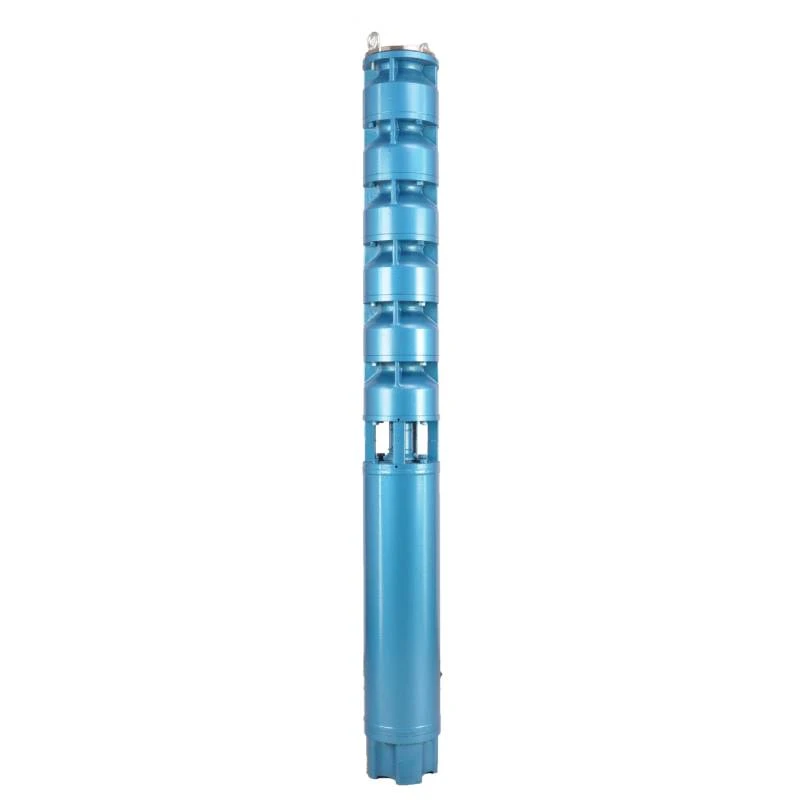Oct . 13, 2024 21:57 Back to list
submersible pump oil vs water filled
Submersible Pump Oil vs. Water-Filled Options
Submersible pumps are an essential piece of equipment in various industries, from agriculture to sewage management. They are designed to operate underwater and are encased in a protective housing. The choice between oil-filled and water-filled submersible pumps can significantly affect their efficiency, maintenance, and overall performance. In this article, we will explore the differences between these two types of submersible pumps to help you determine which one best meets your needs.
Understanding Submersible Pumps
Submersible pumps function by converting rotational energy into hydrodynamic energy, thereby pushing water or other fluids to the surface. These pumps typically have a motor that is submerged along with the pump, allowing them to operate in a wide range of applications. The key difference lies in the type of cooling and lubrication provided to the motor.
Oil-Filled Submersible Pumps
Oil-filled submersible pumps are equipped with the motor encased in oil, which serves as both a coolant and a lubricant. The advantages of oil-filled pumps include their ability to operate at higher temperatures, which can be beneficial in applications involving hot water or fluids. The oil surrounding the motor provides excellent insulation, protecting it from moisture and other contaminants.
Moreover, oil-filled pumps tend to have lower maintenance requirements compared to their water-filled counterparts. The oil serves to keep the motor lubricated, reducing wear and tear and extending the life of the pump. These pumps are often used in applications that require continuous operation, such as dewatering in construction sites or draining flooded areas.
submersible pump oil vs water filled

However, there are some downsides to consider. Oil-filled pumps can be heavier and bulkier due to the additional components needed to contain the oil. Furthermore, if there is a leak in the casing, the environmental impact can be significant since oil spillage can cause contamination.
Water-Filled Submersible Pumps
Water-filled submersible pumps, on the other hand, use water as a coolant and lubricant. These pumps are typically lighter and more compact than oil-filled models and are often used in less demanding applications, such as residential sump pumps or irrigation systems. The main advantage of water-filled pumps is the absence of toxic fluids; in the event of a leak, water poses less environmental risk than oil.
One of the drawbacks of water-filled pumps is their limited temperature range. Since water has a lower boiling point than oil, these pumps might not perform as efficiently in high-temperature conditions. Additionally, the lubrication provided by water is not as effective as the oil, leading to higher wear and a reduced operational lifespan.
Making the Right Choice
When determining which type of submersible pump to use, consider the specific requirements of your application. For environments with high temperatures or continuous use, an oil-filled pump may be the better choice. Conversely, if environmental concerns are paramount or if the pump is intended for lighter-duty applications, a water-filled pump could be more suitable.
In conclusion, both oil-filled and water-filled submersible pumps have their respective benefits and limitations. Understanding your operational needs, weight considerations, and environmental impact will guide you in making an informed decision. Whether you choose oil or water-filled pumps, ensuring proper installation and maintenance is crucial for maximizing their performance and longevity.
-
Submersible Water Pump: The Efficient 'Power Pioneer' of the Underwater World
NewsJul.01,2025
-
Submersible Pond Pump: The Hidden Guardian of Water Landscape Ecology
NewsJul.01,2025
-
Stainless Well Pump: A Reliable and Durable Pumping Main Force
NewsJul.01,2025
-
Stainless Steel Submersible Pump: An Efficient and Versatile Tool for Underwater Operations
NewsJul.01,2025
-
Deep Well Submersible Pump: An Efficient 'Sucker' of Groundwater Sources
NewsJul.01,2025
-
Deep Water Well Pump: An Efficient 'Sucker' of Groundwater Sources
NewsJul.01,2025
-
 Submersible Water Pump: The Efficient 'Power Pioneer' of the Underwater WorldIn the field of hydraulic equipment, the Submersible Water Pump has become the core equipment for underwater operations and water resource transportation due to its unique design and excellent performance.Detail
Submersible Water Pump: The Efficient 'Power Pioneer' of the Underwater WorldIn the field of hydraulic equipment, the Submersible Water Pump has become the core equipment for underwater operations and water resource transportation due to its unique design and excellent performance.Detail -
 Submersible Pond Pump: The Hidden Guardian of Water Landscape EcologyIn courtyard landscapes, ecological ponds, and even small-scale water conservancy projects, there is a silent yet indispensable equipment - the Submersible Pond Pump.Detail
Submersible Pond Pump: The Hidden Guardian of Water Landscape EcologyIn courtyard landscapes, ecological ponds, and even small-scale water conservancy projects, there is a silent yet indispensable equipment - the Submersible Pond Pump.Detail -
 Stainless Well Pump: A Reliable and Durable Pumping Main ForceIn the field of water resource transportation, Stainless Well Pump has become the core equipment for various pumping scenarios with its excellent performance and reliable quality.Detail
Stainless Well Pump: A Reliable and Durable Pumping Main ForceIn the field of water resource transportation, Stainless Well Pump has become the core equipment for various pumping scenarios with its excellent performance and reliable quality.Detail
